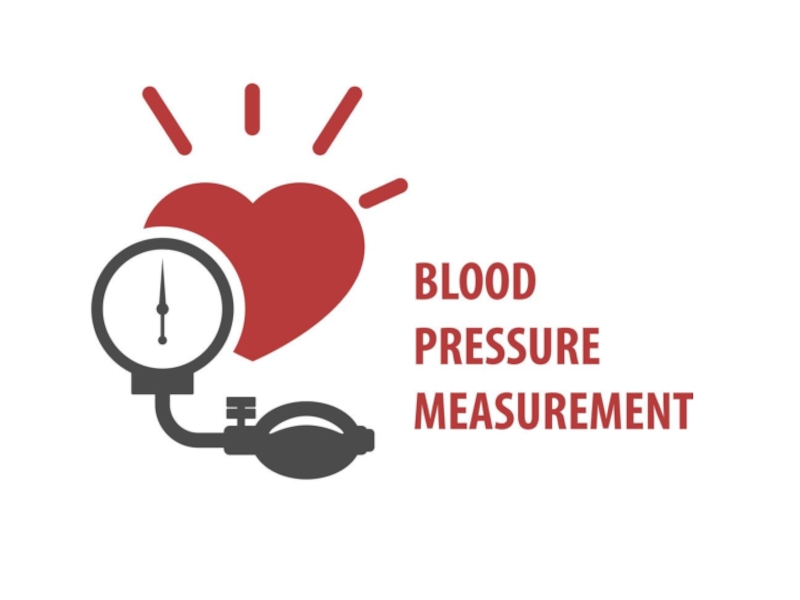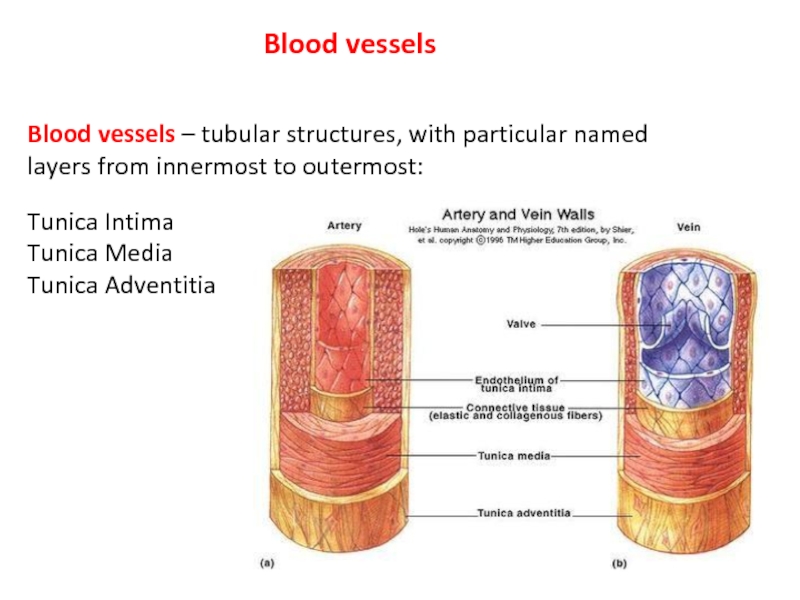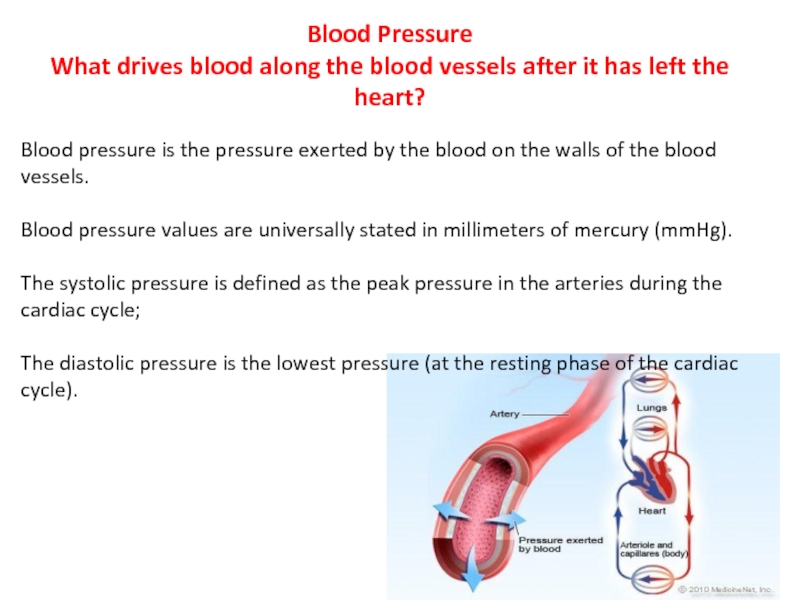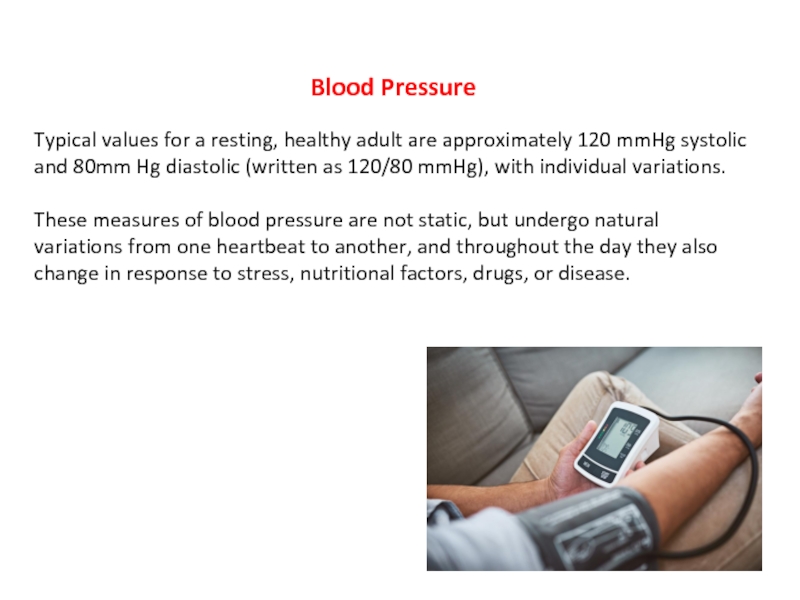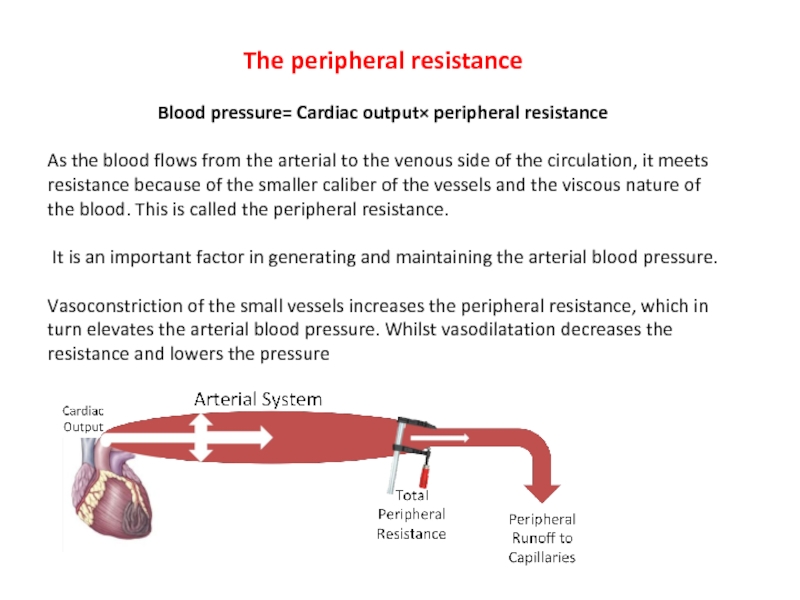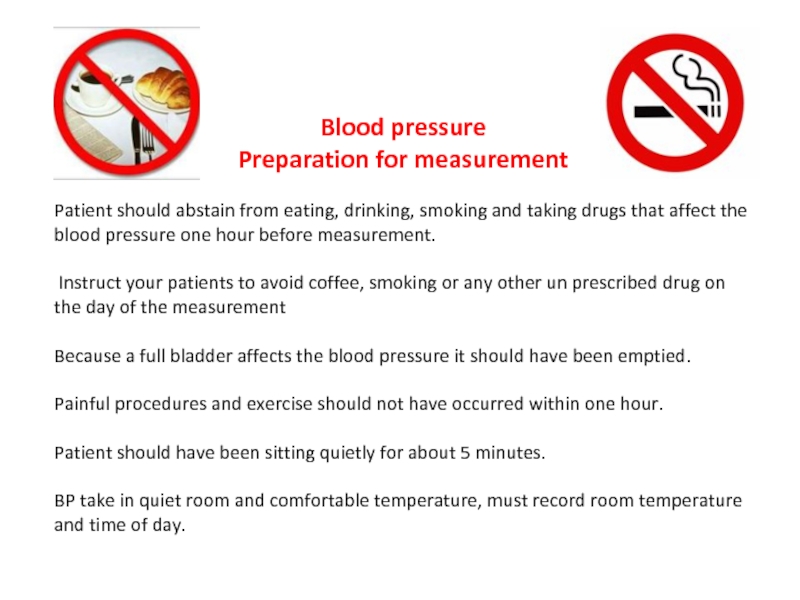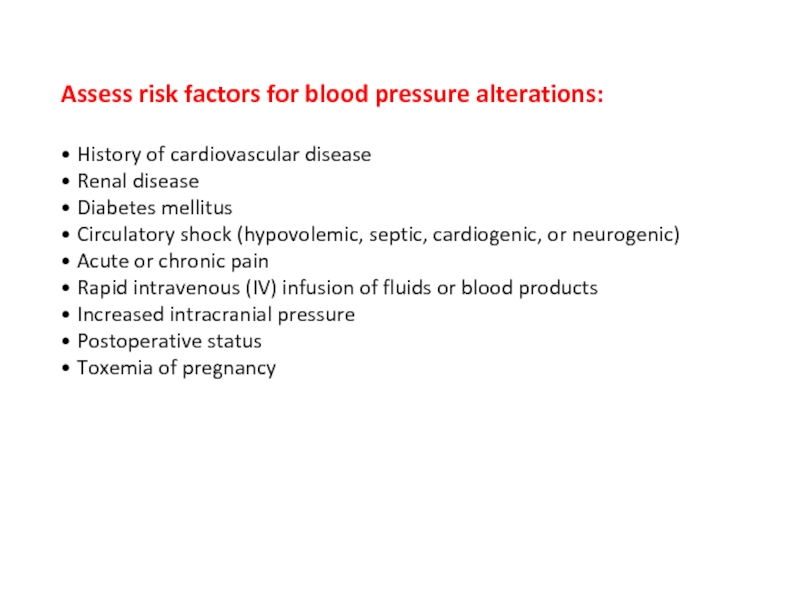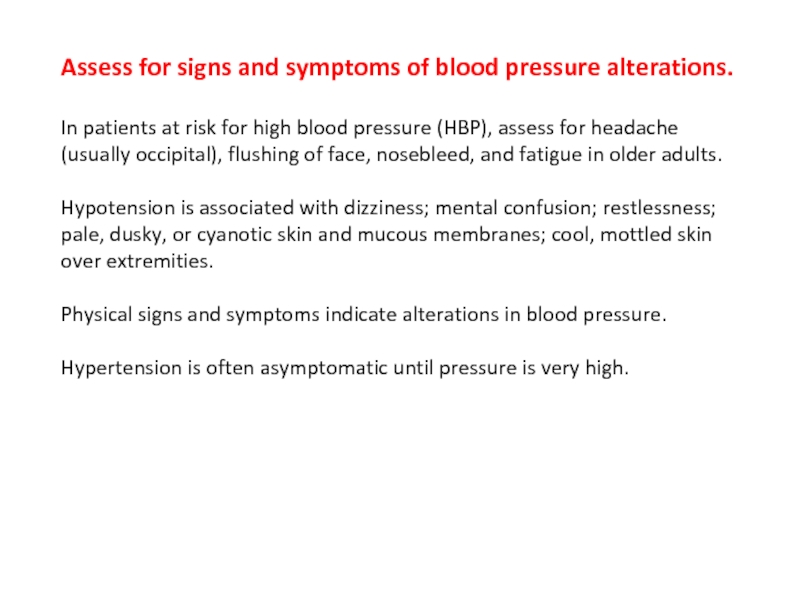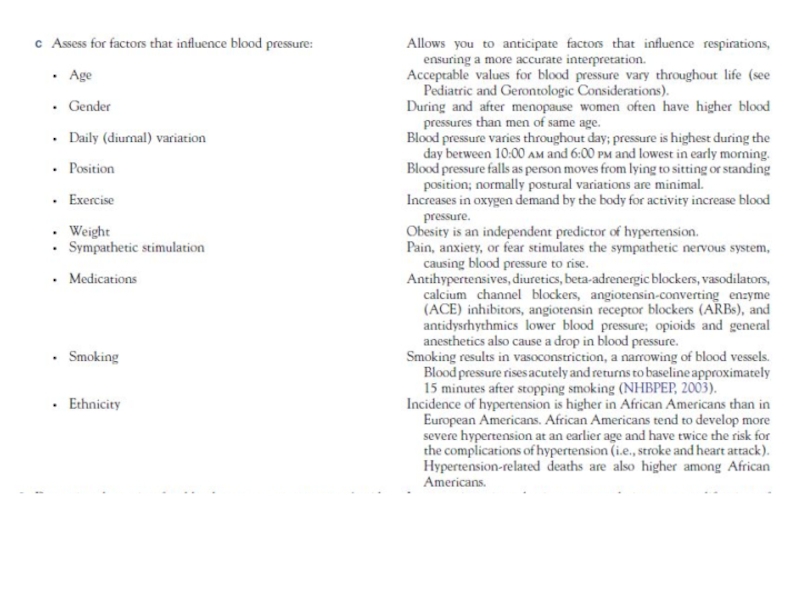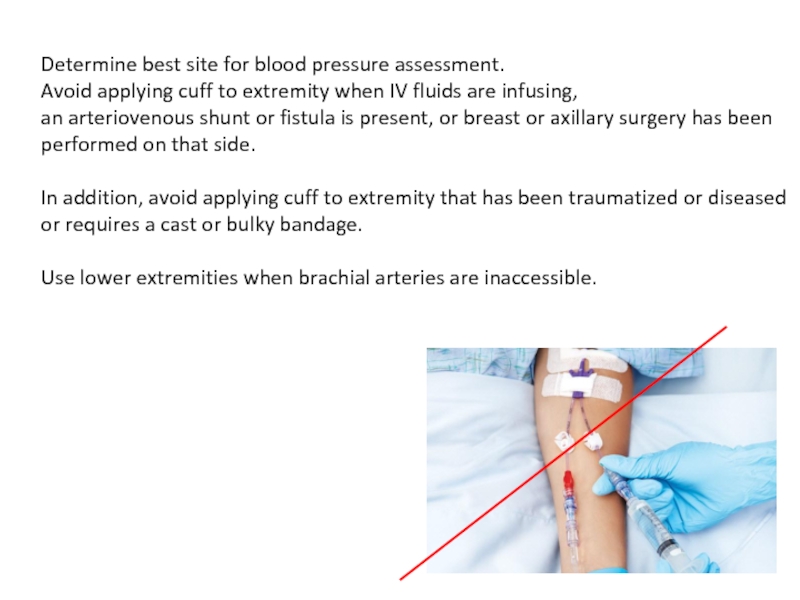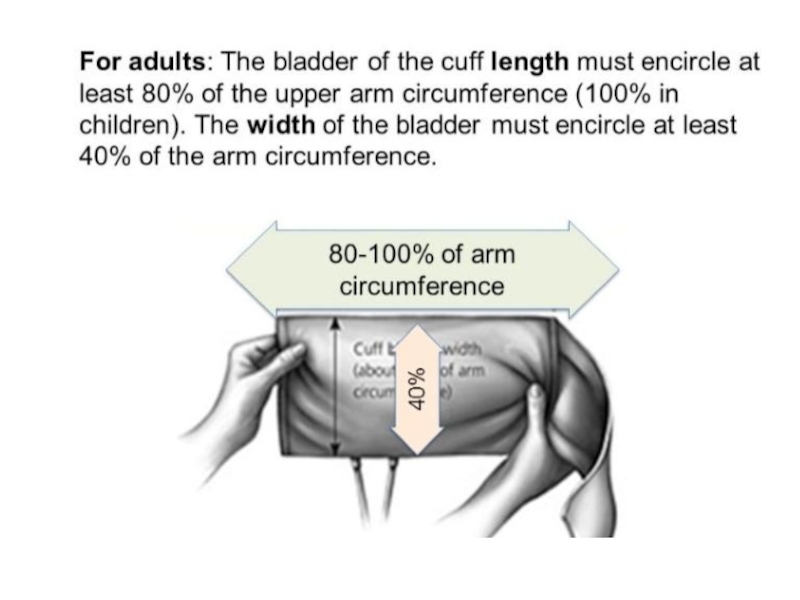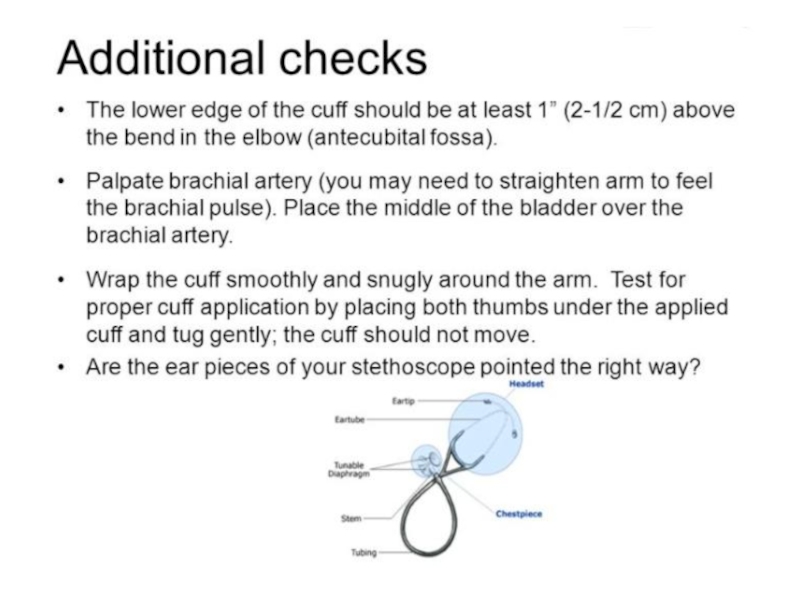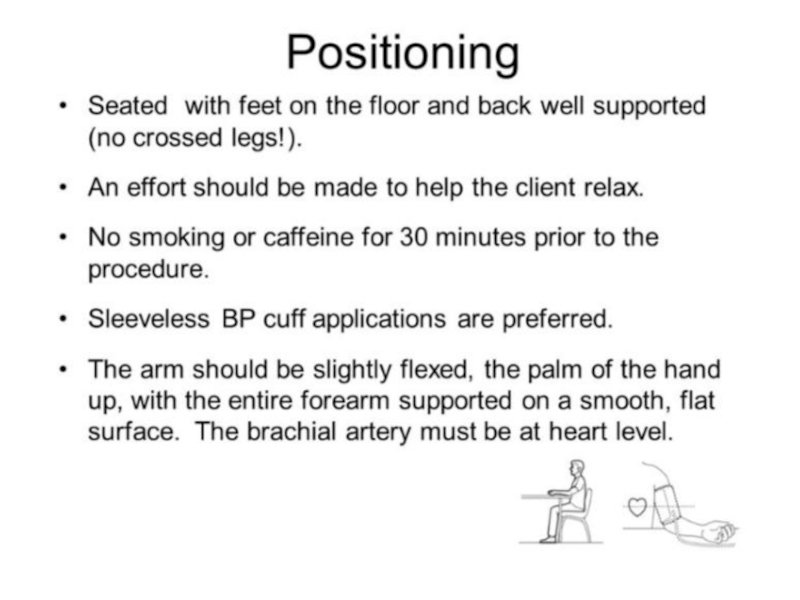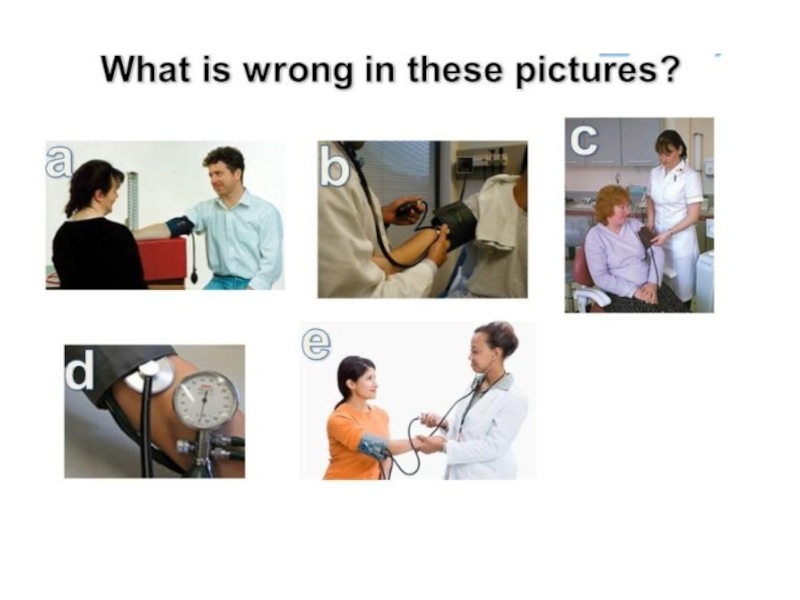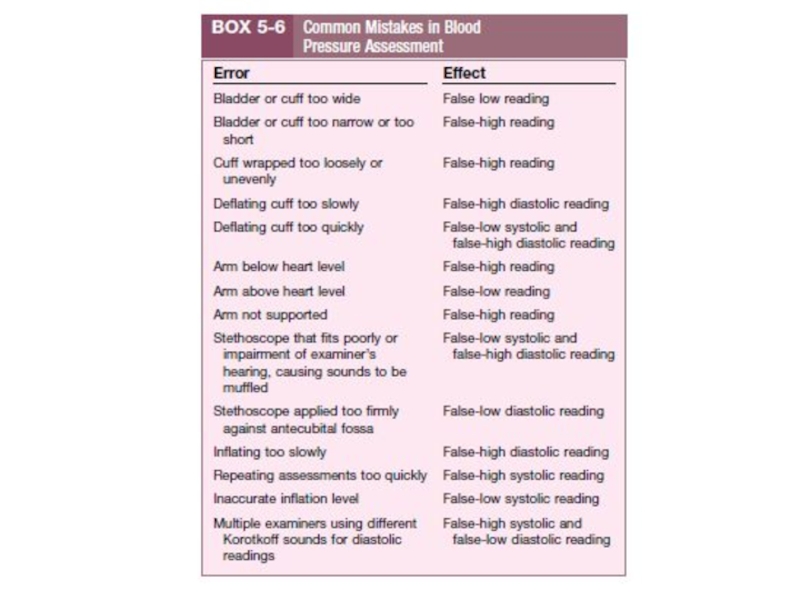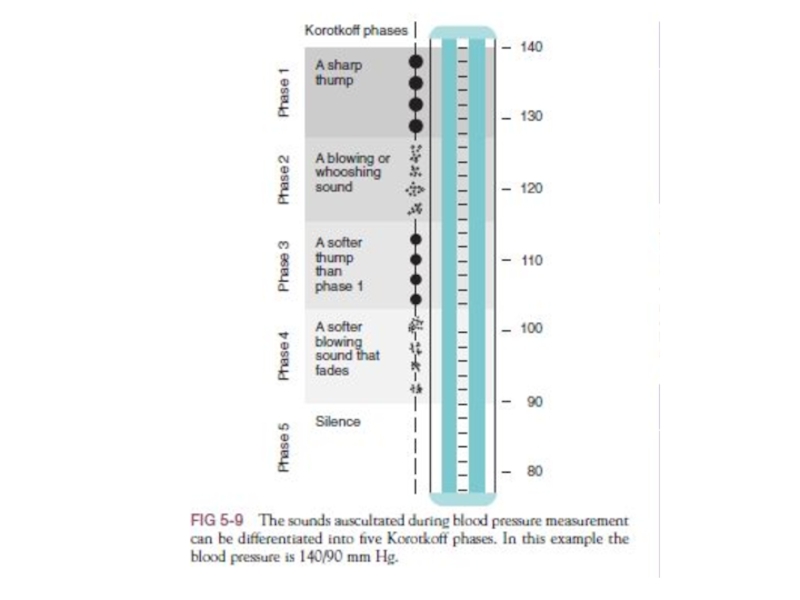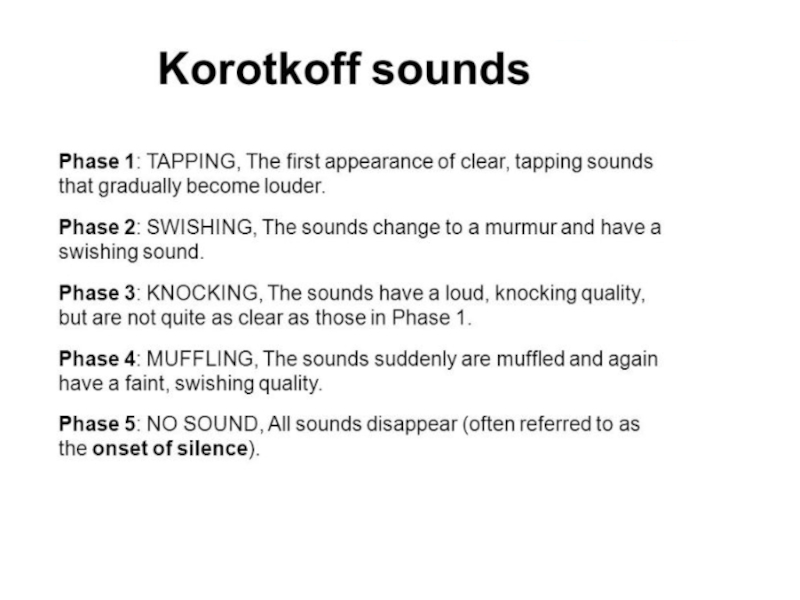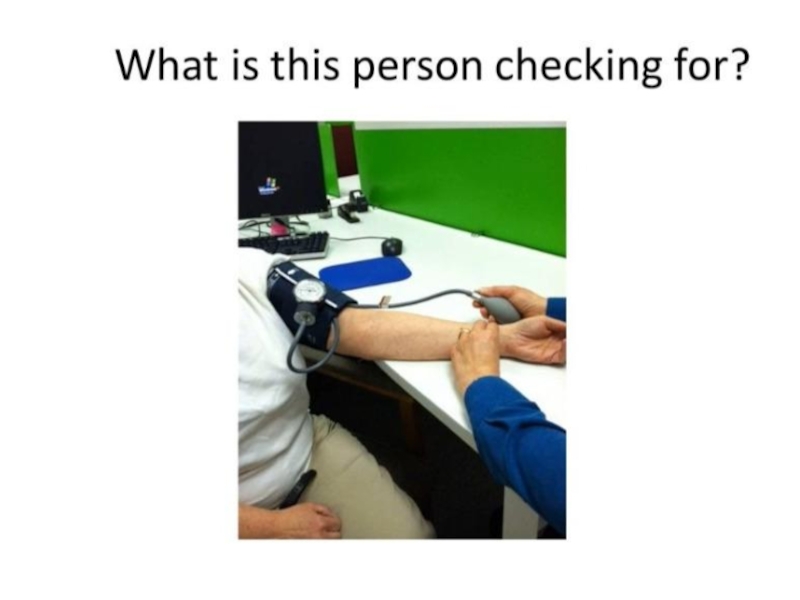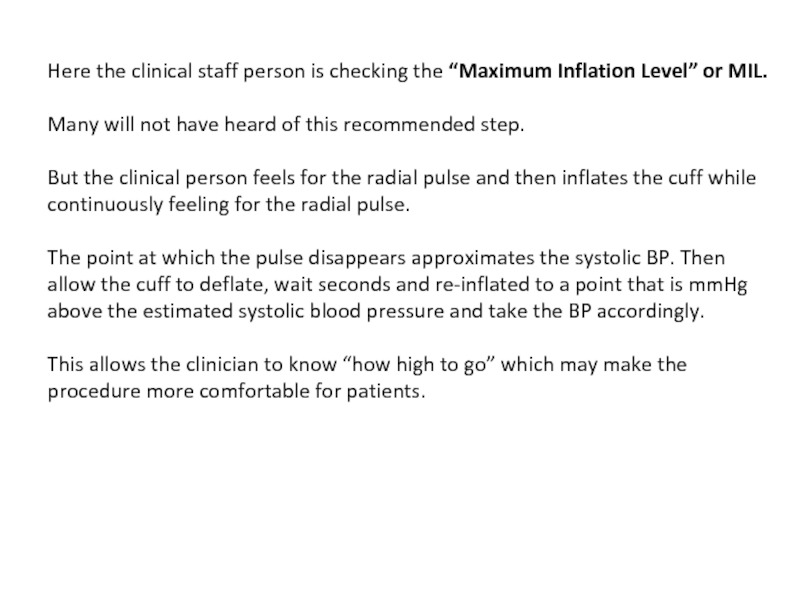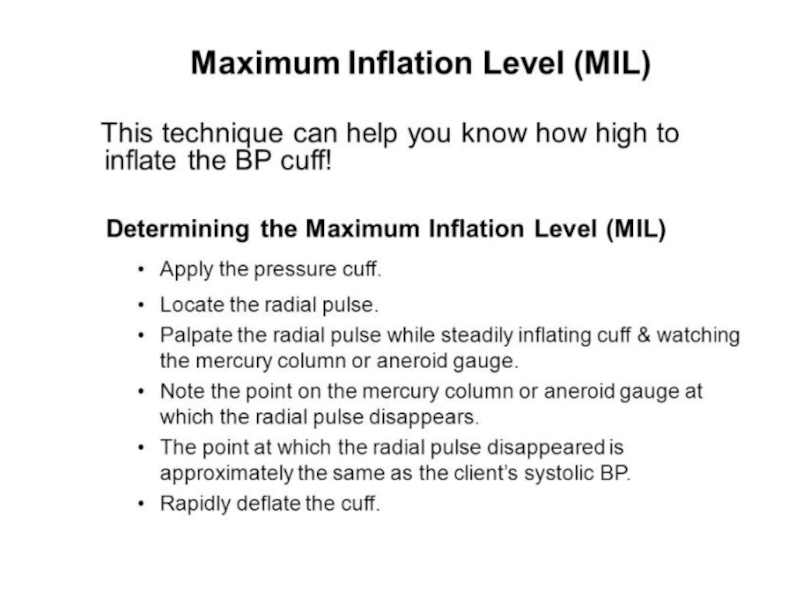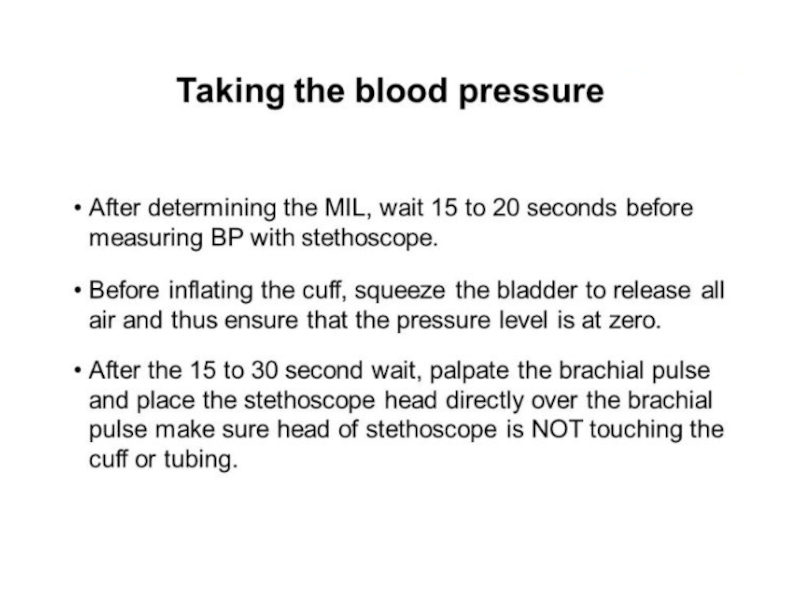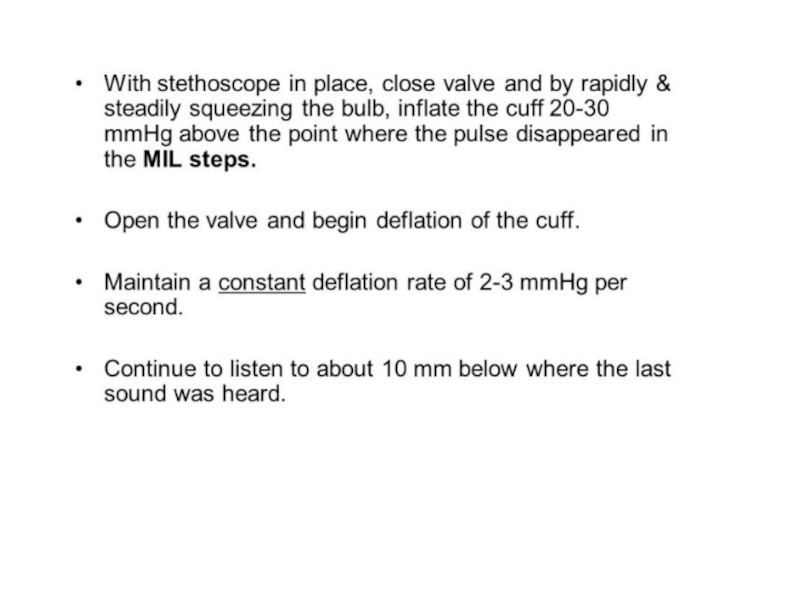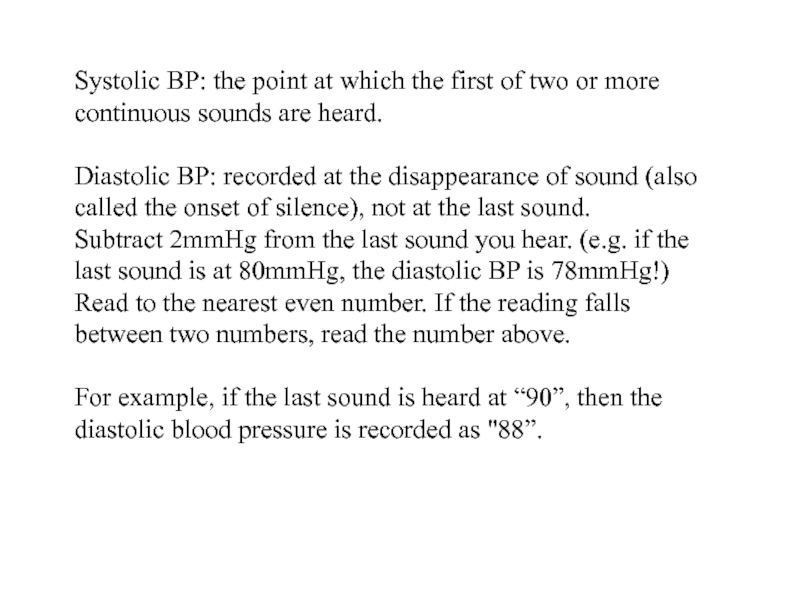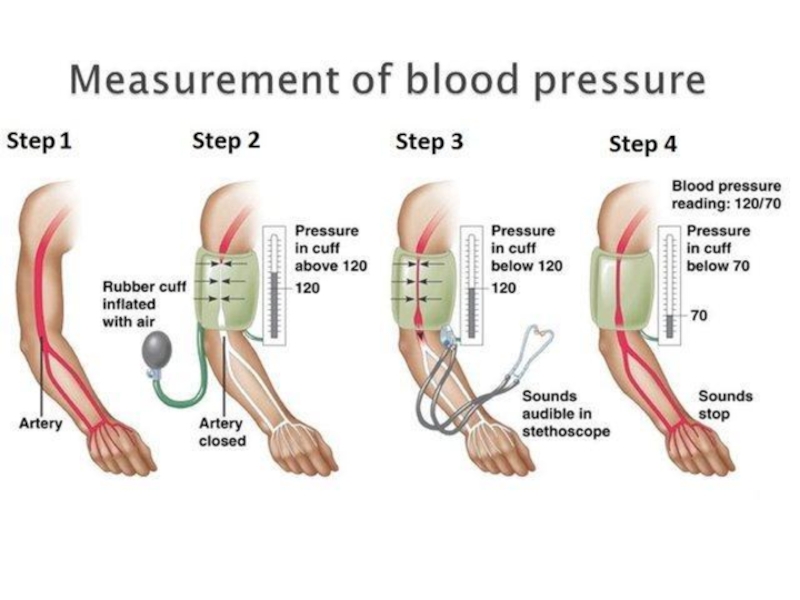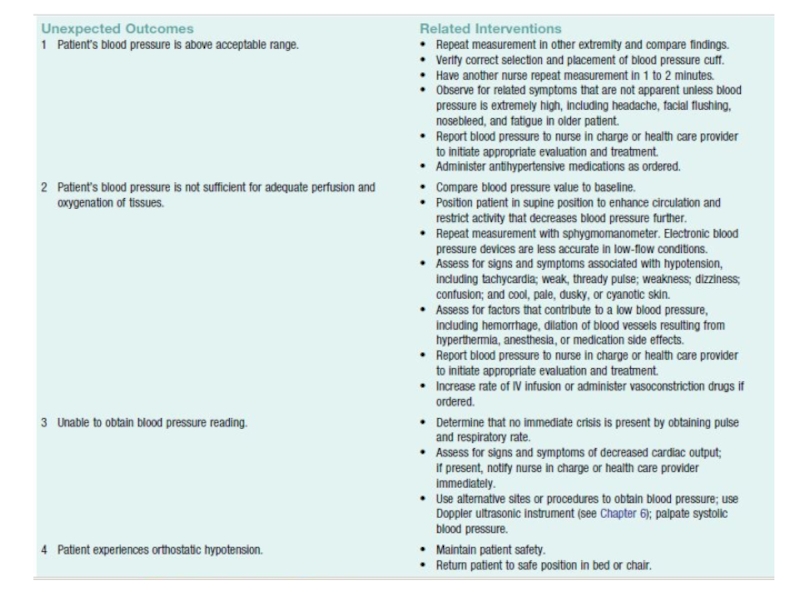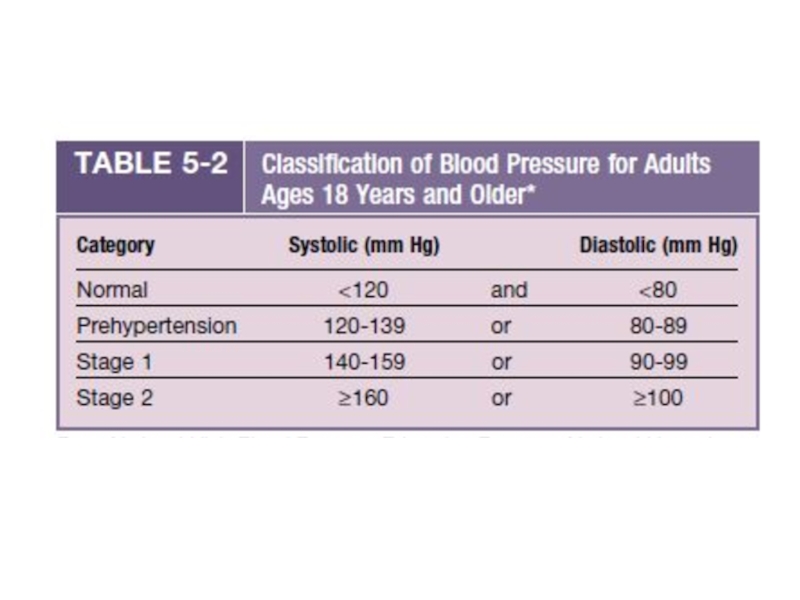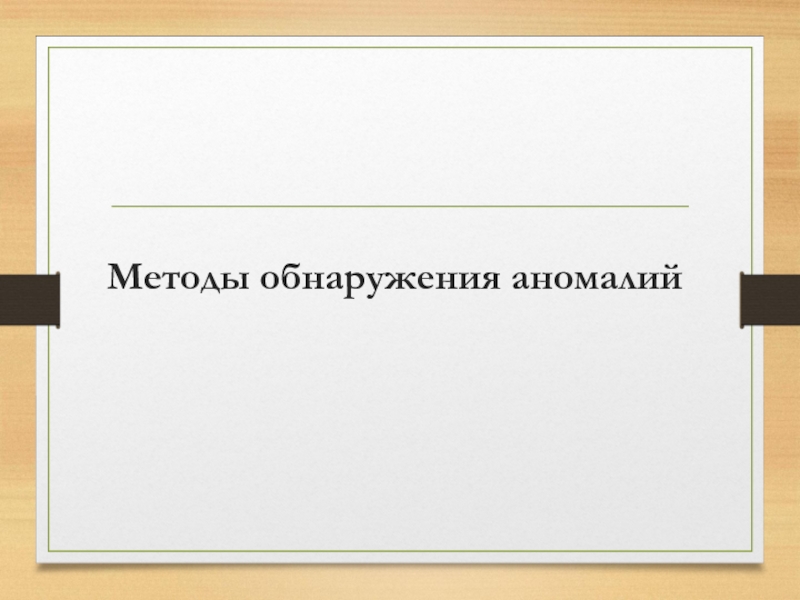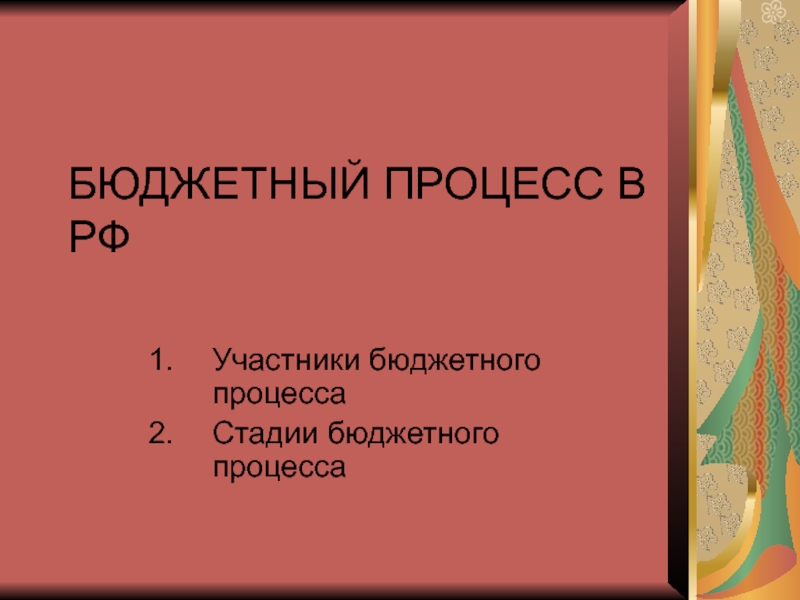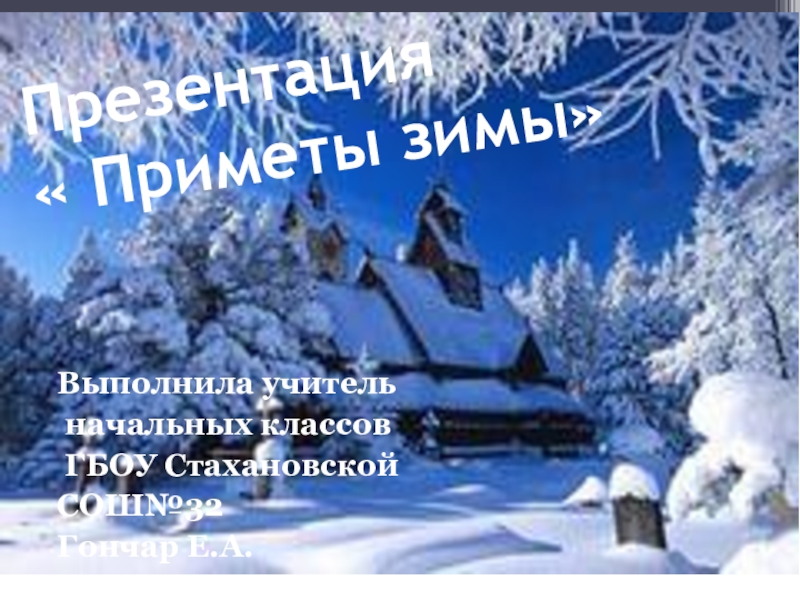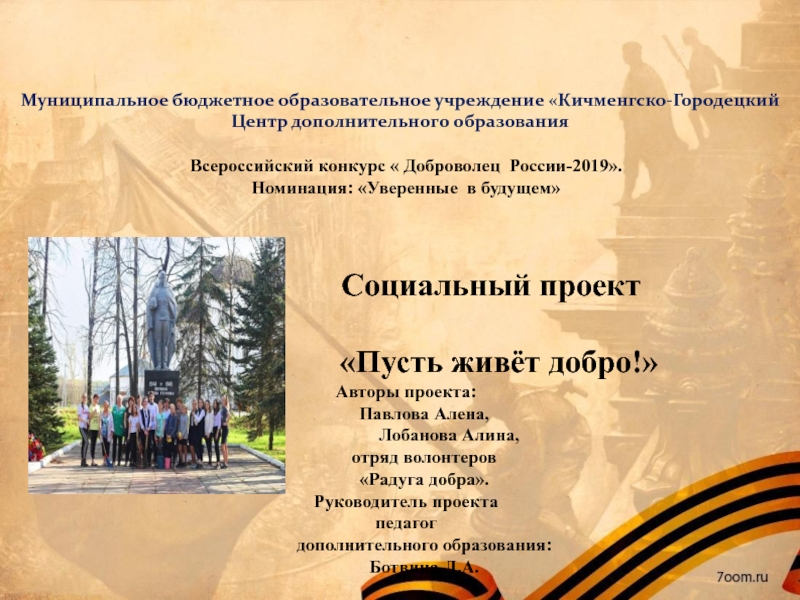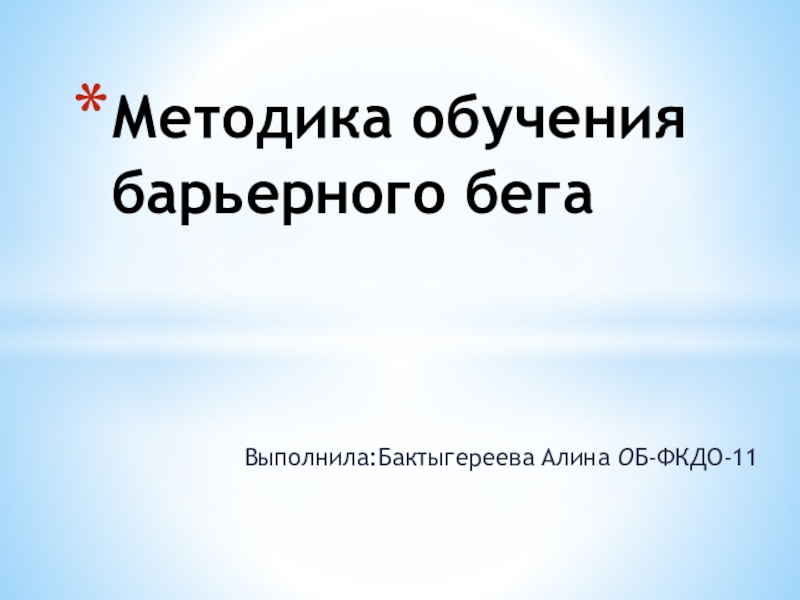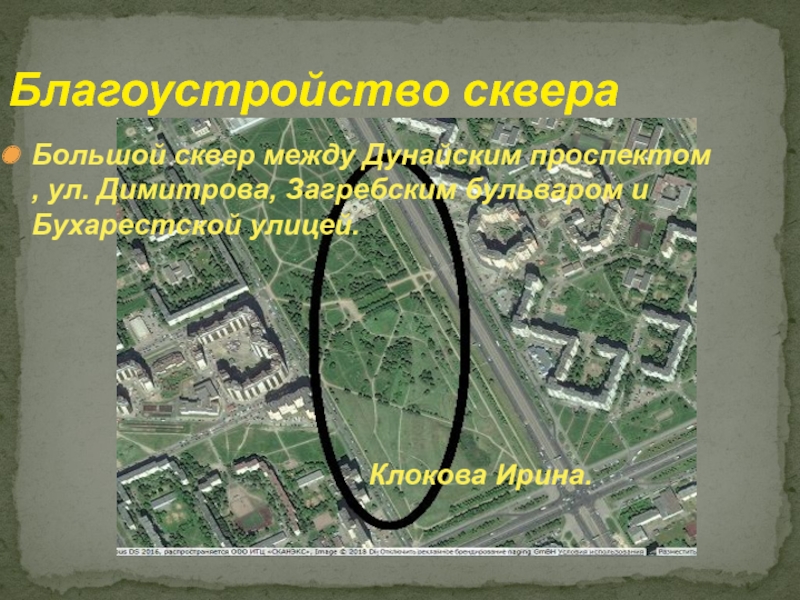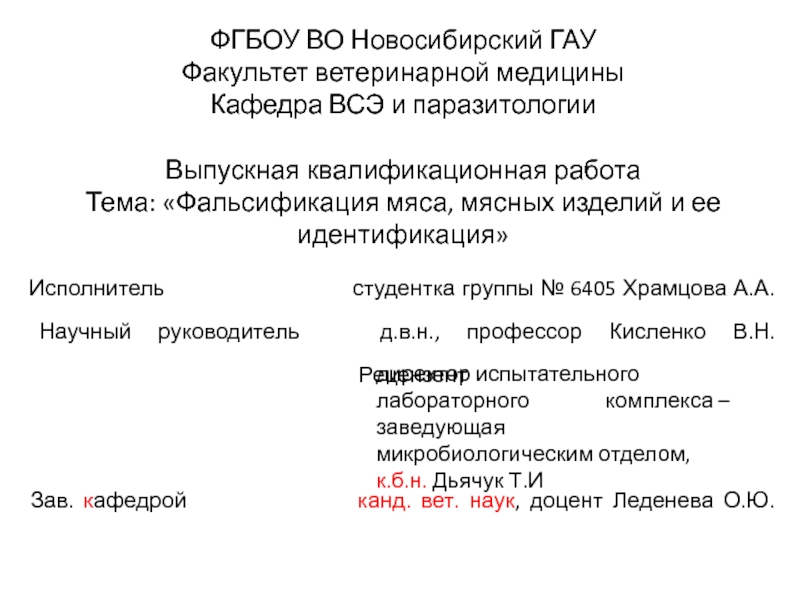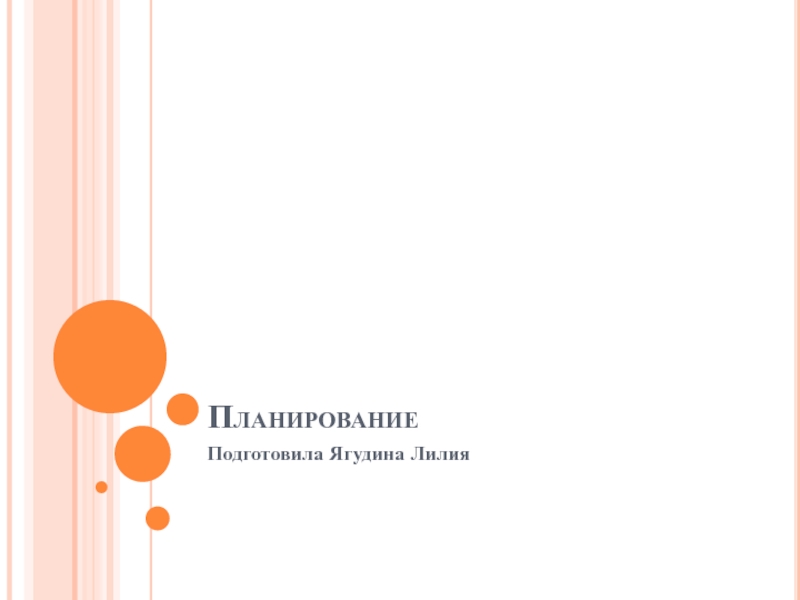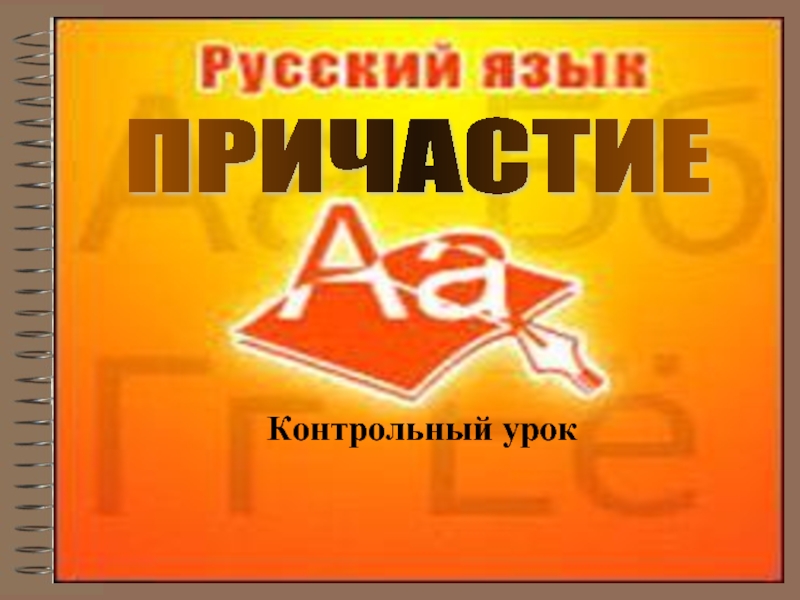Разделы презентаций
- Разное
- Английский язык
- Астрономия
- Алгебра
- Биология
- География
- Геометрия
- Детские презентации
- Информатика
- История
- Литература
- Математика
- Медицина
- Менеджмент
- Музыка
- МХК
- Немецкий язык
- ОБЖ
- Обществознание
- Окружающий мир
- Педагогика
- Русский язык
- Технология
- Физика
- Философия
- Химия
- Шаблоны, картинки для презентаций
- Экология
- Экономика
- Юриспруденция
BP
Содержание
- 1. BP
- 2. Blood vessels Blood vessels – tubular structures,
- 3. Blood Pressure What drives blood along the
- 4. Blood Pressure Typical values for a resting,
- 5. The peripheral resistance Blood pressure= Cardiac output×
- 6. Blood pressure Preparation for measurement Patient should
- 7. Assess risk factors for blood pressure alterations:•
- 8. Assess for signs and symptoms of blood
- 9. Слайд 9
- 10. Determine best site for blood pressure assessment.
- 11. Слайд 11
- 12. Слайд 12
- 13. Слайд 13
- 14. Слайд 14
- 15. Слайд 15
- 16. Слайд 16
- 17. Слайд 17
- 18. Слайд 18
- 19. Here the clinical staff person is checking
- 20. Слайд 20
- 21. Слайд 21
- 22. Слайд 22
- 23. Systolic BP: the point at which the
- 24. Слайд 24
- 25. Слайд 25
- 26. Слайд 26
- 27. Скачать презентанцию
Blood vessels Blood vessels – tubular structures, with particular named layers from innermost to outermost: Tunica Intima Tunica Media Tunica Adventitia
Слайды и текст этой презентации
Слайд 2Blood vessels
Blood vessels – tubular structures, with particular named
layers from innermost to outermost:
Adventitia Слайд 3Blood Pressure
What drives blood along the blood vessels after
it has left the heart?
Blood pressure is the pressure
exerted by the blood on the walls of the blood vessels. Blood pressure values are universally stated in millimeters of mercury (mmHg).
The systolic pressure is defined as the peak pressure in the arteries during the cardiac cycle;
The diastolic pressure is the lowest pressure (at the resting phase of the cardiac cycle).
Слайд 4Blood Pressure
Typical values for a resting, healthy adult are
approximately 120 mmHg systolic and 80mm Hg diastolic (written as
120/80 mmHg), with individual variations.These measures of blood pressure are not static, but undergo natural variations from one heartbeat to another, and throughout the day they also change in response to stress, nutritional factors, drugs, or disease.
Слайд 5The peripheral resistance
Blood pressure= Cardiac output× peripheral resistance
As
the blood flows from the arterial to the venous side
of the circulation, it meets resistance because of the smaller caliber of the vessels and the viscous nature of the blood. This is called the peripheral resistance.It is an important factor in generating and maintaining the arterial blood pressure.
Vasoconstriction of the small vessels increases the peripheral resistance, which in turn elevates the arterial blood pressure. Whilst vasodilatation decreases the resistance and lowers the pressure
Слайд 6Blood pressure
Preparation for measurement
Patient should abstain from
eating, drinking, smoking and taking drugs that affect the blood
pressure one hour before measurement.Instruct your patients to avoid coffee, smoking or any other un prescribed drug on the day of the measurement
Because a full bladder affects the blood pressure it should have been emptied.
Painful procedures and exercise should not have occurred within one hour.
Patient should have been sitting quietly for about 5 minutes.
BP take in quiet room and comfortable temperature, must record room temperature and time of day.
Слайд 7Assess risk factors for blood pressure alterations:
• History of cardiovascular
disease
• Renal disease
• Diabetes mellitus
• Circulatory shock (hypovolemic, septic, cardiogenic,
or neurogenic)• Acute or chronic pain
• Rapid intravenous (IV) infusion of fluids or blood products
• Increased intracranial pressure
• Postoperative status
• Toxemia of pregnancy
Слайд 8Assess for signs and symptoms of blood pressure alterations.
In patients
at risk for high blood pressure (HBP), assess for headache
(usually occipital), flushing of face, nosebleed, and fatigue in older adults.Hypotension is associated with dizziness; mental confusion; restlessness; pale, dusky, or cyanotic skin and mucous membranes; cool, mottled skin over extremities.
Physical signs and symptoms indicate alterations in blood pressure.
Hypertension is often asymptomatic until pressure is very high.
Слайд 10Determine best site for blood pressure assessment.
Avoid applying cuff
to extremity when IV fluids are infusing,
an arteriovenous shunt
or fistula is present, or breast or axillary surgery has been performed on that side. In addition, avoid applying cuff to extremity that has been traumatized or diseased
or requires a cast or bulky bandage.
Use lower extremities when brachial arteries are inaccessible.
Слайд 19Here the clinical staff person is checking the “Maximum Inflation
Level” or MIL.
Many will not have heard of this
recommended step. But the clinical person feels for the radial pulse and then inflates the cuff while continuously feeling for the radial pulse.
The point at which the pulse disappears approximates the systolic BP. Then allow the cuff to deflate, wait seconds and re-inflated to a point that is mmHg above the estimated systolic blood pressure and take the BP accordingly.
This allows the clinician to know “how high to go” which may make the procedure more comfortable for patients.
Слайд 23Systolic BP: the point at which the first of two
or more continuous sounds are heard.
Diastolic BP: recorded at
the disappearance of sound (also called the onset of silence), not at the last sound. Subtract 2mmHg from the last sound you hear. (e.g. if the last sound is at 80mmHg, the diastolic BP is 78mmHg!)
Read to the nearest even number. If the reading falls between two numbers, read the number above.
For example, if the last sound is heard at “90”, then the diastolic blood pressure is recorded as "88”.
